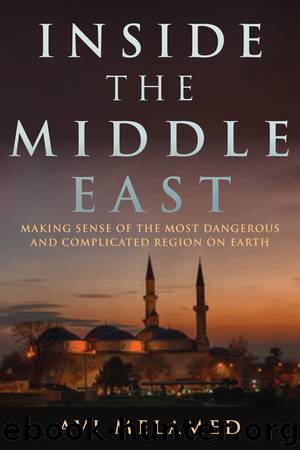Inside the Middle East by Avi Melamed

Author:Avi Melamed
Language: eng
Format: epub
Publisher: Skyhorse Publishing
Published: 2016-03-08T05:00:00+00:00
CHAPTER EIGHT
THE FAILURES OF THE WEST
ON JUNE 4, 2009, PRESIDENT BARACK Obama delivered a speech at Cairo University in Egypt titled “A New Beginning.”1 In it he called for the opening of a new page in the relationship of the West with the Muslim world. “I have come here,” Obama said, “to seek a new beginning between the United States and Muslims around the world; one based upon mutual interest and mutual respect, and one based upon the truth that America and Islam are not exclusive, and need not be in competition. Instead, they overlap, and share common principles, principles of justice and progress, tolerance, and the dignity of all human beings.”2
Obama’s speech was viewed as a turning point and created expectations for a substantive change that would have a positive impact on the Middle East. Yet at the end of his second term in office, it seems that the only thing that exceeds the expectations of the Arab world following Obama’s speech is the level of Arab disappointment in President Obama.
Today, to put it simply, many Arabs are convinced that his administration made a strategic shift by collaborating with Iran and throwing the Arab world under the bus.
Why do Arabs feel that way?
Let’s quickly review some concepts we have explored in depth in other parts of this book. Two axes of a historic struggle have played—and continue to play—a central role in the history and the reality of the Middle East. One axis is the struggle between Sunnis and Shiites. An abyss of hostility, differing ideological and theological opinions, political clashes, and mutual violence has divided Sunni and Shiite Islam for more than thirteen hundred years. The other axis is the rivalry between two large regional civilizations: the Arab civilization of the Arabian Peninsula and the Persian civilization. Hundreds of years of political, military, and cultural rivalry have characterized the relations between these two civilizations.
Today as the wheels of history turn, the Sunni Arab world watches as its worst nightmare materializes. Four Arab states, Iraq, Lebanon, Syria, and Yemen, are today under the direct and indirect growing Iranian influence; the Iranian Revolutionary Guards, as well as Iranian-backed Shiite militias—Afghan Shiite militias, Hezbollah, and Iraqi Shiite militias—are fighting in Iraq and Syria; and in Yemen, the Iranian-backed Shiite Houthi tribe occupies central and northern Yemen, including its capital, Sana’a.
Iran is moving full steam ahead in occupying Arab states, either directly or indirectly, through proxies. A senior Iranian official announced that Baghdad, Iraq’s capital, is the capital of the Persian Empire (though he later denied that he’d said this, arguing he was misunderstood).3 Another Iranian official announced that Syria is the thirty-fifth district of the Iranian Empire.4 Baghdad and Damascus are not only Arab state capitals; they were the center of the two biggest Arab Sunni dynasties that ruled the Muslim caliphate from 661–1250, and these dynasties were responsible for the creation of the Sunni-Arab domination over the Shiites and the Persian civilization. This helps explain why the Arab world is traumatized by the Iranian momentum.
Download
This site does not store any files on its server. We only index and link to content provided by other sites. Please contact the content providers to delete copyright contents if any and email us, we'll remove relevant links or contents immediately.
| Anthropology | Archaeology |
| Philosophy | Politics & Government |
| Social Sciences | Sociology |
| Women's Studies |
The Secret History by Donna Tartt(16623)
The Social Justice Warrior Handbook by Lisa De Pasquale(11489)
Thirteen Reasons Why by Jay Asher(7788)
This Is How You Lose Her by Junot Diaz(5772)
Weapons of Math Destruction by Cathy O'Neil(5037)
Zero to One by Peter Thiel(4824)
The Myth of the Strong Leader by Archie Brown(4789)
Promise Me, Dad by Joe Biden(4447)
Beartown by Fredrik Backman(4419)
Stone's Rules by Roger Stone(4415)
How Democracies Die by Steven Levitsky & Daniel Ziblatt(4399)
The Fire Next Time by James Baldwin(4343)
100 Deadly Skills by Clint Emerson(4079)
A Higher Loyalty: Truth, Lies, and Leadership by James Comey(4033)
Rise and Kill First by Ronen Bergman(4012)
The David Icke Guide to the Global Conspiracy (and how to end it) by David Icke(3882)
The Farm by Tom Rob Smith(3872)
Secrecy World by Jake Bernstein(3782)
The Doomsday Machine by Daniel Ellsberg(3731)
